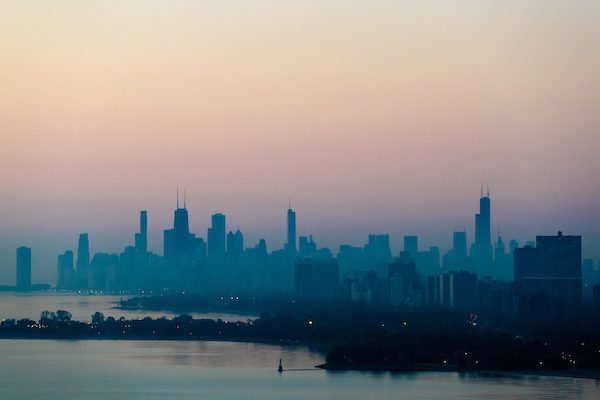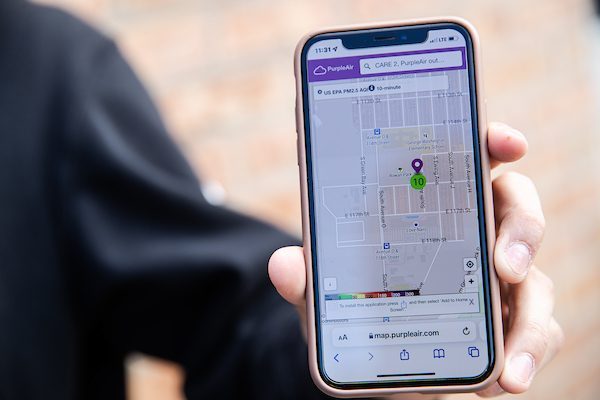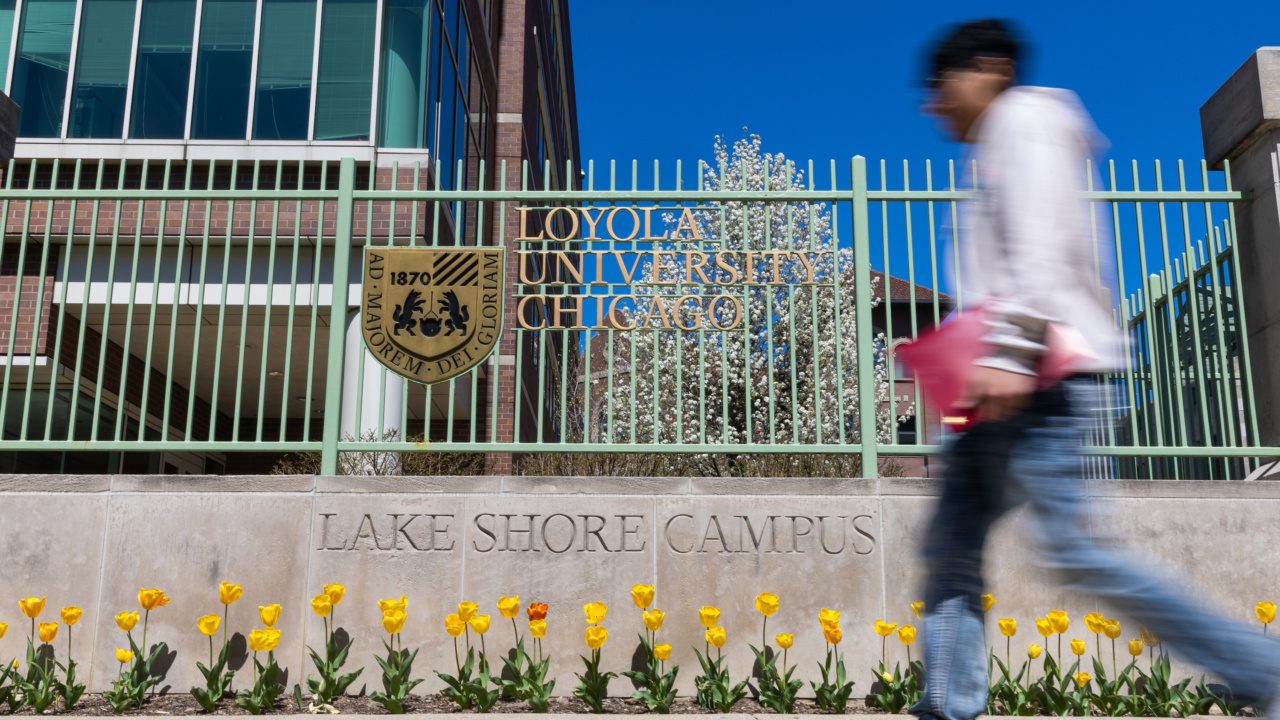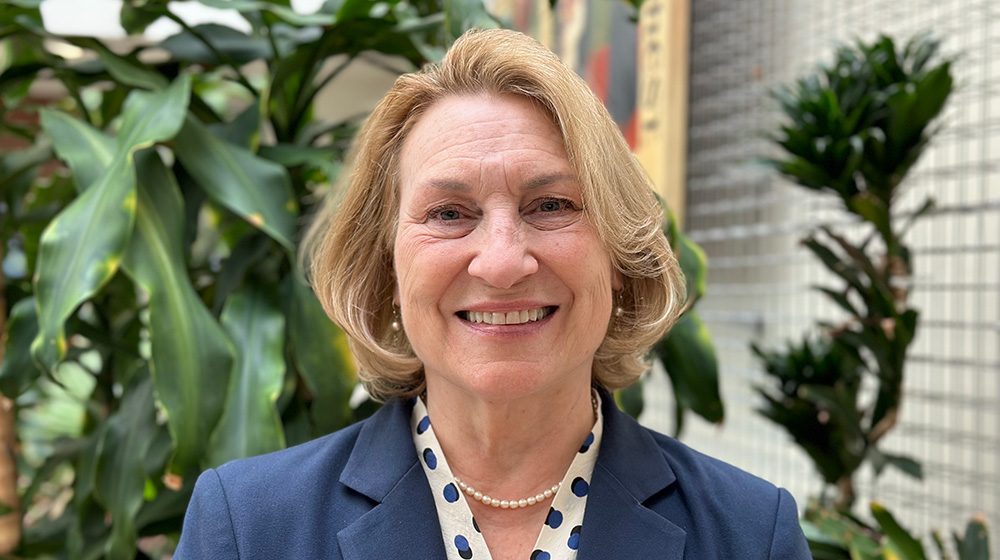
Researchers study air quality differences across Chicago
Like a cockroach or a mosquito, particulate matter 2.5 (PM2.5) is tiny and nasty. The air droplets develop as carbon fuel burns. A car or truck can spew them out, as can a forest fire. Of the air pollutants that the U.S. Environmental Protection Agency (EPA) regulates, it’s one of the most dangerous given its ability to slide deep into the respiratory tract or bloodstream, exacerbating ailments like asthma and heart disease. Even mild exposure can induce coughing, sneezing, or shortness of breath. And the lung—delicate and sensitive, with thin membranes that interact with the world around us constantly—typically bears the brunt.
“The lung is interesting compared to a lot of other organs because it is exposed to the external environment every day in a way that most other organs are not. And the air we breathe is filled with stuff,” says Daniel Dilling, a professor in the Division of Pulmonary and Critical Care at Loyola University Chicago’s Stritch School of Medicine. “A lot of people take their lungs for granted.”
Ping Jing, an associate professor at Loyola’s School of Environmental Sustainability, is not one of those people. Jing was born and raised in China, where she witnessed up-close that country’s rapid industrial development. As a graduate student at the Georgia Institute of Technology in the early 2000s, her research tracked the exchange of ozone between the stratosphere and the troposphere, the lowest region of Earth’s atmosphere.
At Loyola, she’s continued to investigate the degradation of air quality on a warming planet. Practical application is crucial to Jing’s pedagogy; she never lectures on a concept without asking her students to use their own hands. The approach stems, in part, from her experience teaching in her second language. “If you’re not a native speaker, you don’t want to speak for 80 minutes straight. You want to take breaks,” Jing says. “I had to turn that weakness into an advantage.”
The Community Air Research Experience (CARE) is her latest foray into experiential instruction, a collaboration with Colorado State University that marries her scientific scholarship around pollution with her consistent desire “to contribute visibly to society.” Working alongside SES colleague Tania Schusler, an assistant professor, and funded through a three-year National Science Foundation grant, CARE offers undergraduate students underrepresented in the sciences an authentic research opportunity to monitor PM2.5 levels in Chicago. This past spring, the cohort—recruited through student organizations that serve Loyola students of color—participated in seminars and field trips to learn the nuts and bolts of research design. As paid interns this summer, they’re spending four intensive weeks installing air monitoring instruments, learning computer programming skills, and collecting data. In the fall, they’ll finalize and disseminate their findings.
Ixchel Barraza, a rising junior environmental studies major, learned of CARE through the Student Diversity and Multicultural Affairs newsletter. Her application was one of eight accepted. “Immediately,” she says, “I felt this motivation and passion to be a part of it.”
Chicago is an interesting location in which to study the problem of particle pollution. This year, the American Lung Association ranked Chicago as the nation’s 22nd dirtiest city in terms of year-long particle pollution. There are roughly two weeks’ worth of unhealthy air days each year. But toxins in Chicago are not evenly distributed. While pollution has decreased slightly over the past decade, racial and income disparities in exposure persist. One recent paper published in the journal Environmental Science & Technology Letters demonstrated that neighborhoods redlined by federal officials in the 1930s, including some in Chicago, still carry higher levels of air pollution eight decades later. Those segregated neighborhoods tend to have less green space and more pavement, which absorbs and radiates heat. And because of generational disinvestment, land in those communities is relatively cheap, which in turn makes it attractive for new pollution projects (like highways or factories).
In 2021, the Chicago Department of Public Health released the “Air Quality and Health Report.” Areas of greatest concern were largely located on the city’s South and West Sides, on blocks predominated by Black and Latinx Chicagoans. A data team at the local ABC affiliate broke down EPA toxic air data and found that 44 percent of Latinx people in Chicagoland live in areas considered a high risk for respiratory illness, as compared to just 21 percent for white people.
Jing and Schusler organized CARE around this question—if successful, their socially-relevant research seminar would increase understanding about Chicago’s uneven spatial distribution of particle pollution while also generating more data for ongoing community debate. Early in the process, Schusler brought in a pair of environmental organizations as partners: the Southeast Environmental Task Force, in the southeastern neighborhood of Hegewisch, and Edgewater Environmental Coalition, headquartered near the Lake Shore Campus. The neighborhoods were selected strategically—Edgewater, nestled along Lake Michigan, is relatively affluent and walkable compared to Hegewisch, known for its tangle of roadways and its manufacturing base.
The plan? Install sensors at four sites in each neighborhood, near locations of concern for local activists. For four weeks, those sensors will collect hyper-local air quality data using the PurpleAir software platform, data that can be viewed publicly (on a PurpleAir map) in real-time and later analyzed as part of student-lead research projects.
Air pollution in Chicago, by the numbers
#1
in Illinois for PM2.5 particle pollution
44%
of Latinx people in Chicagoland live in high-risk areas for respiratory illness
52
air quality index, considered “moderate” and potentially unhealthy to sensitive groups

In Hegewisch, activists volunteered their homes as inspection locations. Up north, the CARE team found willing partners like Centro Romero, a community-based organization that serves refugees and immigrants. That group’s front door, right alongside a bus-laden stretch of Clark Street, seemed an ideal setting.
When the students arrived for installation, on a warm morning in May, they were still learning how the sensors worked. Earlier in the week, down in Hegewisch, they’d run into issues with a faulty electrical outlet. Outlets were of no concern at Centro Romero. From a tote bag emerged one PurpleAir machine, a small white bulb that can fit in the palm of an adult’s hand. It was unwrapped and its serial number was read off. (The signal it distributes is unique to that specific sensor.)
Once registered, the students laced the power cord around the door frame and secured it in place with electrical tape. There was a tool box, zip ties, a drill, and some debate about how high it should rest. The whole thing had the feel of a small home project, with the requisite trial and error.
In the meantime, Schusler took out her phone and searched for a sensor the group had just installed on the side of her Edgewater home. Up popped detailed data—green is clean, orange isn’t great, and red is quite troubling. In her latest budget proposal, Chicago Mayor Lori Lightfoot set aside money to purchase more air quality monitors. This summer, CARE is filling some of those gaps.
Ethan Bower, a rising junior, has a working hypothesis that air quality, over time, has diverged between neighborhoods on the North and South Sides. He was so taken by the installation process that he’s planning to purchase a sensor for his own house. His classmate, junior Mereya Riopedre, is focusing on the correlation between neighborhood walkability and PM2.5 concentration. Standing on Clark Street, watching traffic cruise by, Riopedre admits how excited she is to collaborate with some of Chicago’s most storied environmental justice organizations. The data her sensor collects will provide more ammunition for their battles.
“It’s really accessible science,” she says. “I feel like if you’re doing science and you can’t explain how it benefits the public, you should probably rethink your approach.”
Read more stories from the School of Environmental Sustainability.



